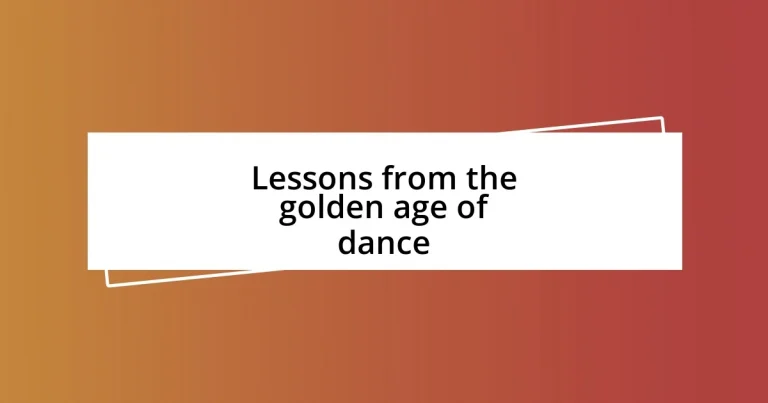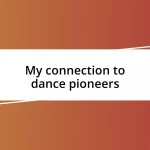Key takeaways:
- Influential figures like Martha Graham, George Balanchine, and Alvin Ailey transformed dance through innovative techniques and deep emotional expression.
- The golden age of dance emphasized storytelling, spatial awareness, and the fusion of styles, fostering a dialogue between movement and emotion.
- Modern dancers can benefit from these lessons by prioritizing community connection, authenticity in expression, and creative risk-taking in their performances.
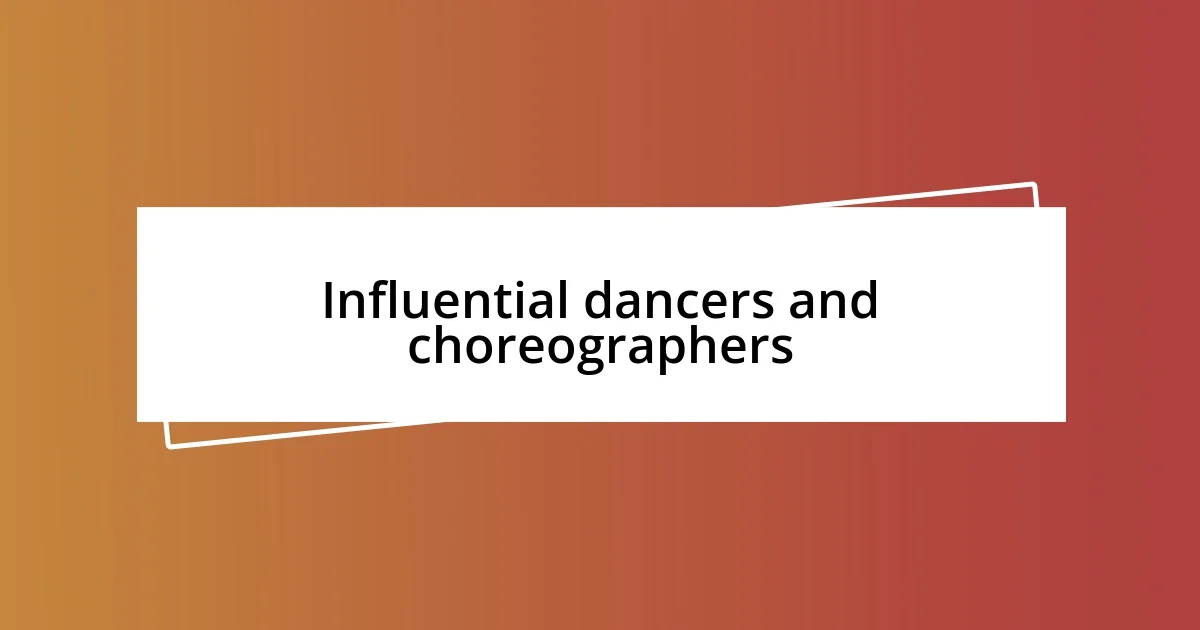
Influential dancers and choreographers
When I think of influential dancers and choreographers from the golden age of dance, one person immediately comes to mind: Martha Graham. I remember the first time I saw a video of her performance; the raw emotion and innovative movements were like nothing I had ever experienced. Graham’s unique style, blending classical techniques with powerful expressions of human struggle, really made me question what dance could convey.
Another luminary in this realm is George Balanchine, whose work revolutionized ballet. His ability to break away from traditional boundaries and create ballets that emphasized the beauty of movement was inspiring. Have you ever watched one of his choreographies and felt like the dancers were floating? That’s the magic of Balanchine—his choreography seems to celebrate the very essence of dance itself.
Lastly, I can’t overlook Alvin Ailey and his profound impact on modern dance. The first time I watched “Revelations,” it felt like witnessing a cultural tapestry come to life. Ailey’s ability to weave together themes of spirituality and struggle resonated deeply with me. Isn’t it remarkable how dance can encapsulate the depth of human experience? Through his work, Ailey not only showcased African American culture but also created universal connections that transcend boundaries.
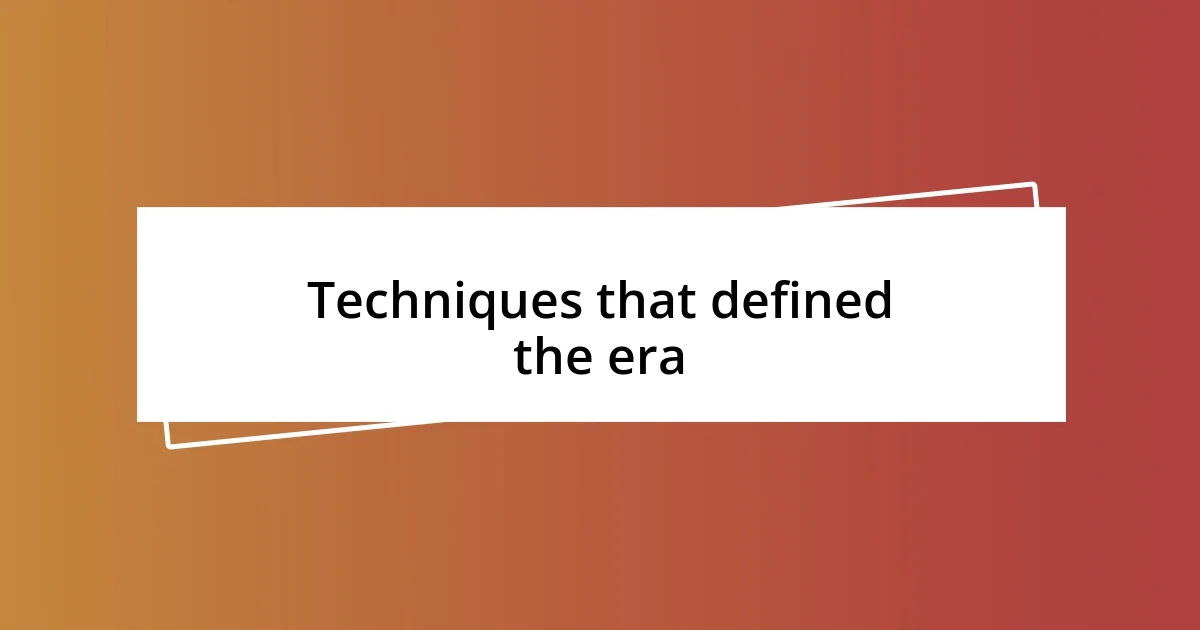
Techniques that defined the era
The golden age of dance was characterized by techniques that stretched the limits of creativity and performance. One element that really stood out for me was the emphasis on expression through physicality. I recall watching performances where dancers used their bodies almost like storytellers, conveying narratives without uttering a single word. This connection between movement and emotion made dance feel like a dialogue—one that transcended language.
Here are some key techniques that defined this era:
– Expressive Body Language: Dancers conveyed deep emotions through subtle shifts in posture and facial expressions, allowing audiences to connect on a visceral level.
– Innovative Choreographic Structures: Choreographers like Balanchine introduced symmetrical formations, which highlighted the fluidity of movement and enhanced the visual appeal.
– Fusion of Styles: This era saw the blending of various dance forms, such as combining ballet with jazz or modern dance, creating a rich tapestry of movement.
– Spatial Awareness: Dancers mastered the use of space, not just as a backdrop, but as an integral part of the performance, drawing the audience into their world.
– Rhythmic Experimentation: Experimental rhythms influenced the way movements were structured and executed, allowing dancers to play with dynamics and tempo in exciting ways.
These techniques not only shaped the performances of the time but also left a lasting impact on how we view and practice dance today.
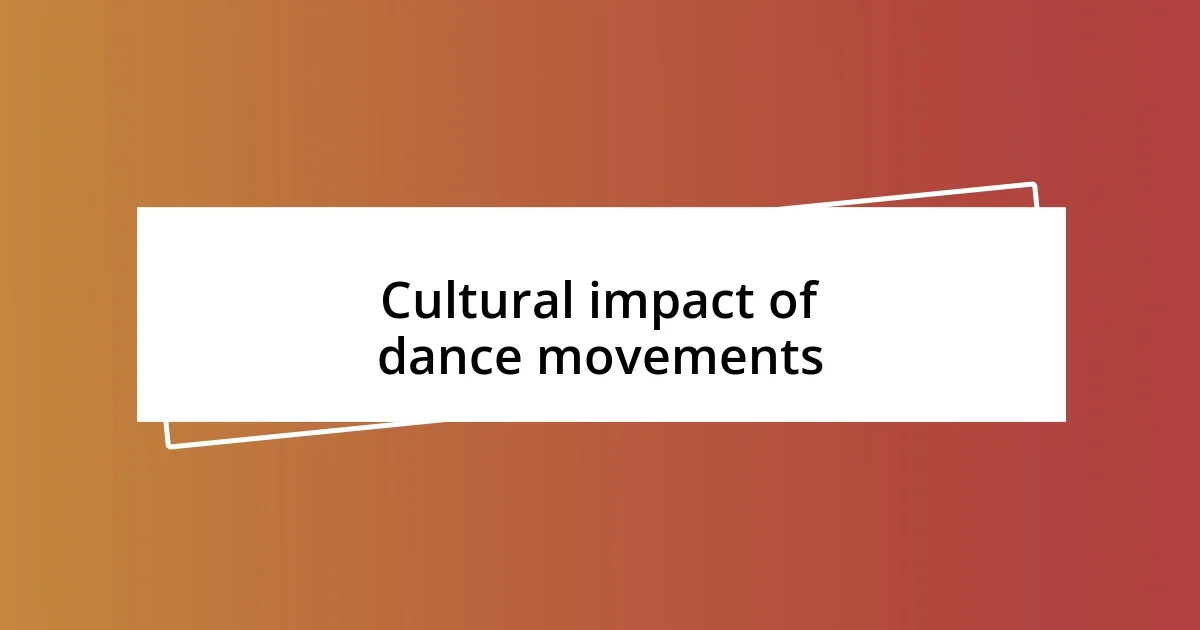
Cultural impact of dance movements
One of the most striking aspects of dance movements during this golden era was their ability to reflect societal changes. I remember attending a performance where the choreography seemed to narrate the struggles for civil rights. The dancers not only moved through space; they also moved through history, making the audience feel the weight of collective experiences. Have you ever experienced a moment like that in which dance acted as a lens to understand cultural shifts? It was powerful and, at times, heart-wrenching.
As different dance forms emerged and evolved, they often captured the essence of their time. For instance, the emergence of jazz dance reflected the vibrancy and chaos of the era. Watching performers light up the stage with their energy took me back to the excitement of that period. It felt like a celebration of life, where every leap and twirl carried a piece of the cultural fabric. This connection between dance and its surrounding context illustrates how movements not only entertain but also serve as a commentary on society.
The golden age of dance also gave rise to unique movements that became cultural phenomena. I often recall how the excitement surrounding the Charleston and the Twist led to a sense of community and shared joy. People from different backgrounds came together on the dance floor, allowing friendship to blossom over rhythmic beats. Doesn’t it warm your heart to think about how dance can unify individuals, breaking down barriers in the process? Through these movements, the cultural landscape expanded, reflecting inclusivity and collective experience.
| Dance Movement | Cultural Significance |
|---|---|
| Charleston | Symbol of the 1920s jazz era, promoting social freedom and a break from tradition. |
| Twist | Embodiment of the social change in the 1960s, encouraging integration and shared joy in the dance space. |
| Martha Graham Technique | Revolutionized modern dance; rooted in personal and emotional expression, reflecting human struggle. |
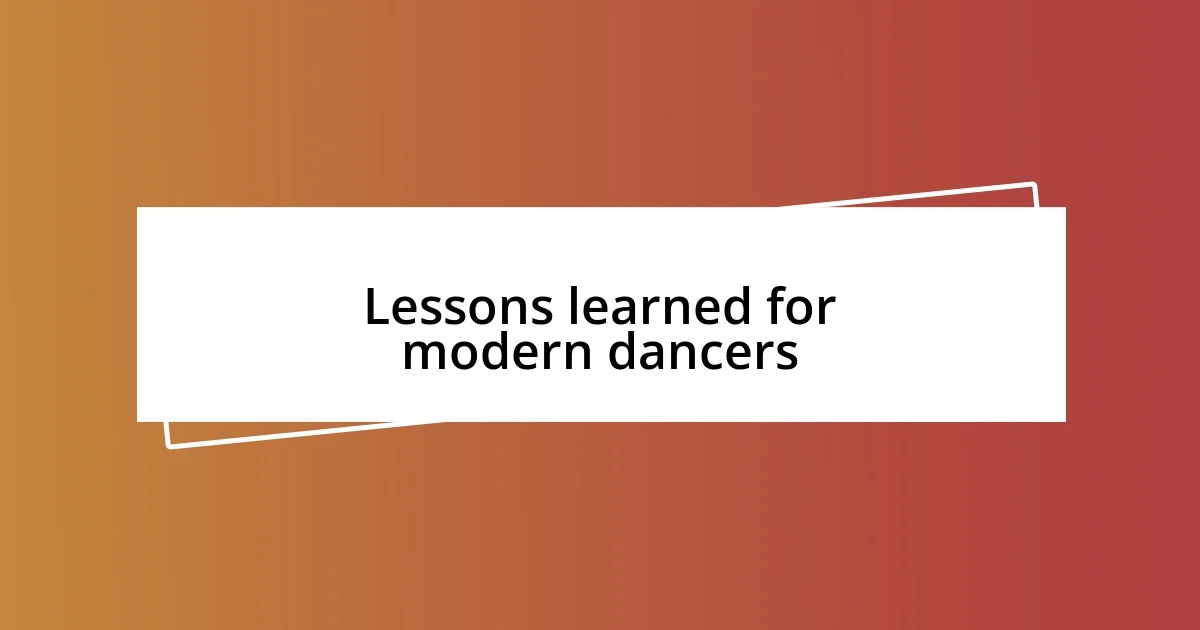
Lessons learned for modern dancers
The lessons from the golden age of dance resonate deeply with me as a dancer today. One powerful takeaway is the importance of storytelling. I vividly recall my first dance performance; I’d practiced every move, yet what truly connected with the audience was how I infused my emotions into each step. Have you ever noticed how a dancer’s facial expressions can amplify the meaning behind a movement? This reminds us to prioritize emotional intensity alongside technical skill.
Another significant lesson is the value of innovation in choreography. I once attended a workshop where the instructor encouraged us to break free from traditional movements and explore our own creative expressions. The result was exhilarating; it felt like we were all authors of a new story. I believe modern dancers can push boundaries by experimenting with various styles and blending them. Why not try combining ballet leaps with hip-hop grooves? The possibilities are endless and can open new avenues for personal expression.
Lastly, I appreciate the emphasis on spatial awareness that emerged during this era. When I practice, I constantly remind myself that my space is an extension of my movement. I remember a particular performance where the dancers filled the stage so dynamically that it felt like the audience was part of the dance. Have you ever felt that sense of immersion when watching a performance? This creates a beautiful connection that pulls everyone together, enhancing the experience for both the dancer and the audience. Embracing this awareness can help today’s dancers create more engaging and impactful performances.
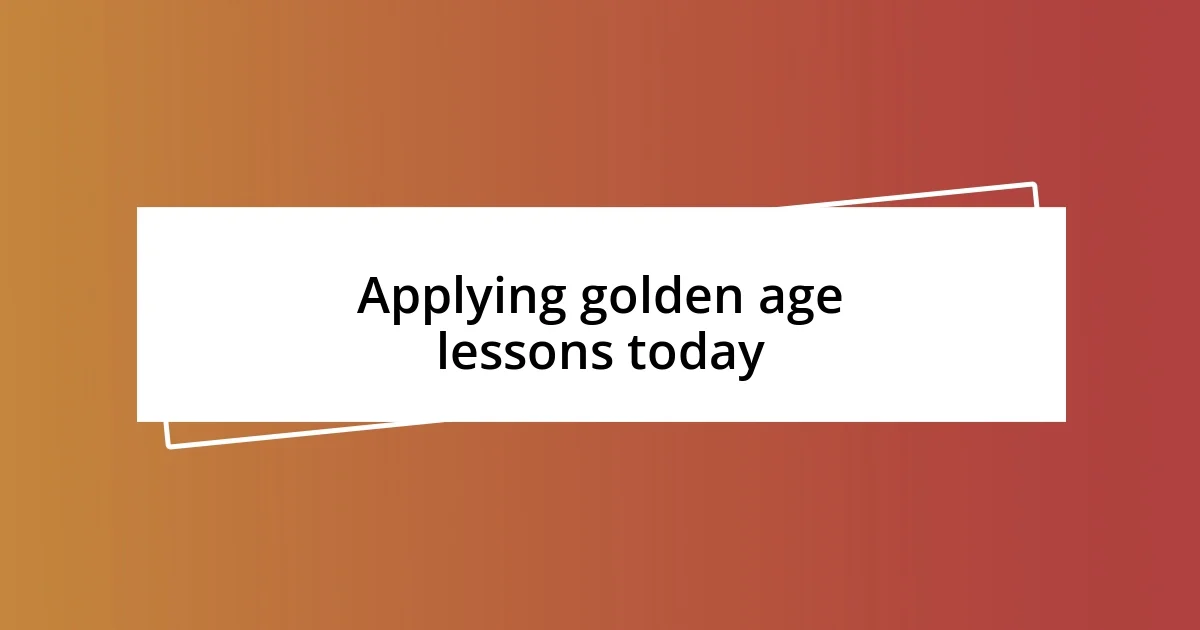
Applying golden age lessons today
Reflecting on the lessons from the golden age of dance, I’ve found that incorporating a sense of community in modern performances is essential. I remember performing a group piece where we synchronized our movements to convey a shared emotion. The audience responded with such enthusiasm, as if they, too, felt part of the story we were telling together. Have you ever witnessed a performance that united a crowd, making everyone feel connected? This highlights how weaving collaboration into our routines can enhance the overall experience for viewers.
Another critical lesson lies in the authenticity of expression. I once participated in a workshop focused on bringing one’s personal story into choreography. It was liberating to share my journey through movement. Each step became a piece of my narrative, and I felt a surge of vulnerability that resonated with the audience. Isn’t it fascinating how vulnerable moments can transform a dance from a mere sequence of movements into an impactful, heartfelt expression? Embracing authenticity can elevate a modern dancer’s performance, allowing them to forge deeper connections with their audience.
Lastly, the creative risk-taking that flourished during the golden age encourages today’s dancers to embrace experimentation. I recall a project where we combined styles like flamenco and contemporary dance, resulting in a dynamic fusion that surprised us all. The thrill of breaking boundaries and discovering new connections is unparalleled. Why not challenge yourself to step outside your comfort zone? Taking risks not only enriches your artistry but also pays homage to the spirit of innovation that defined that remarkable era.












